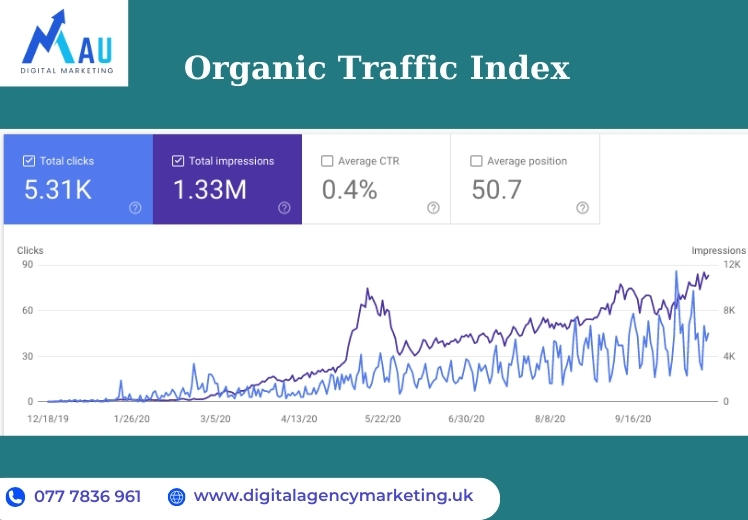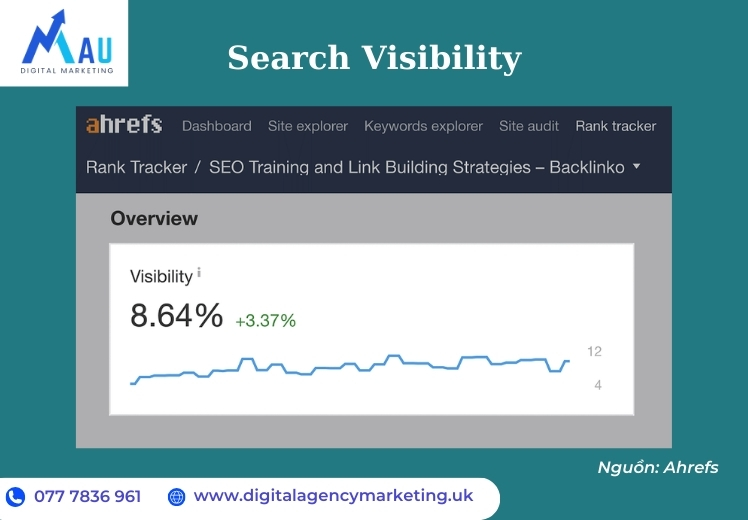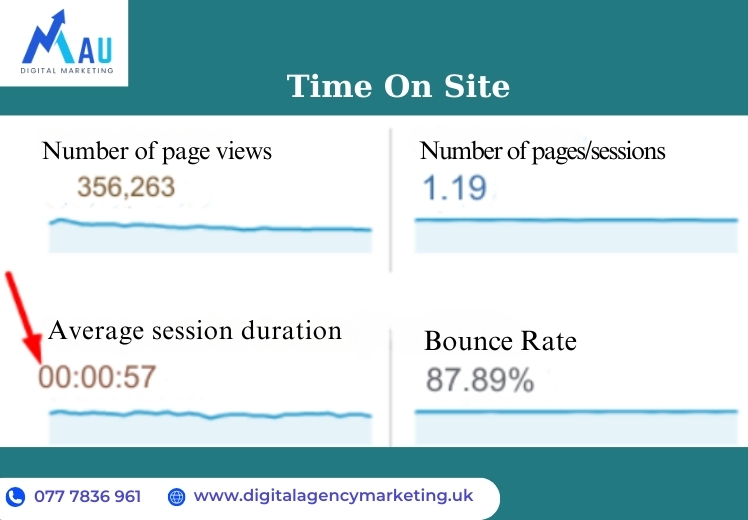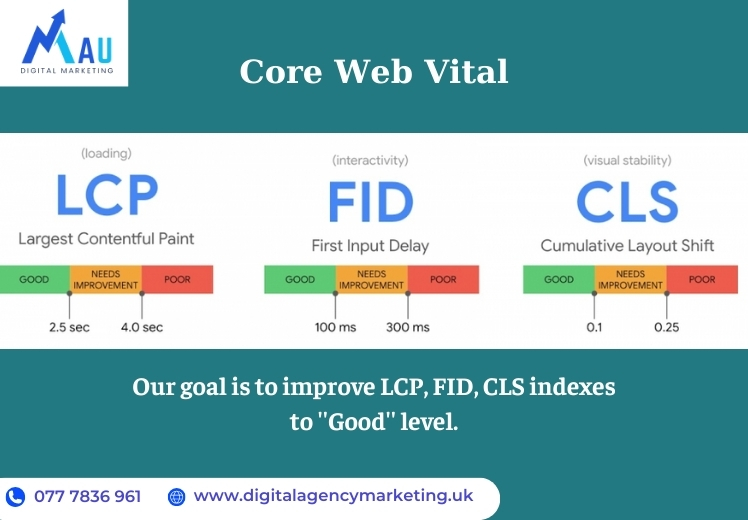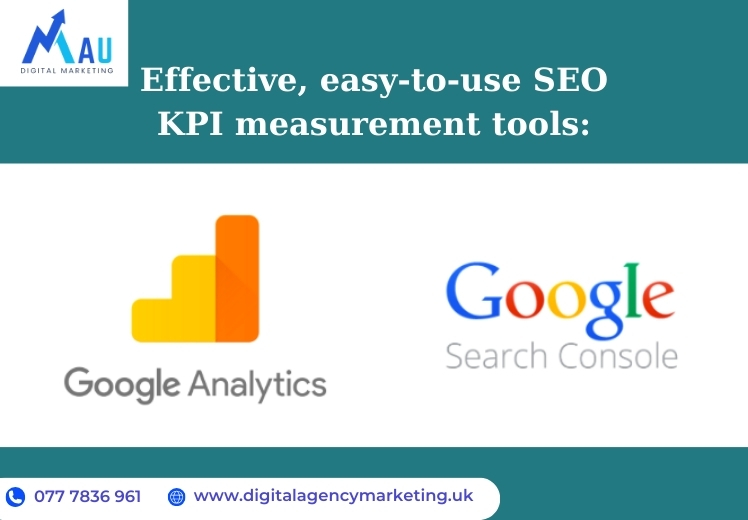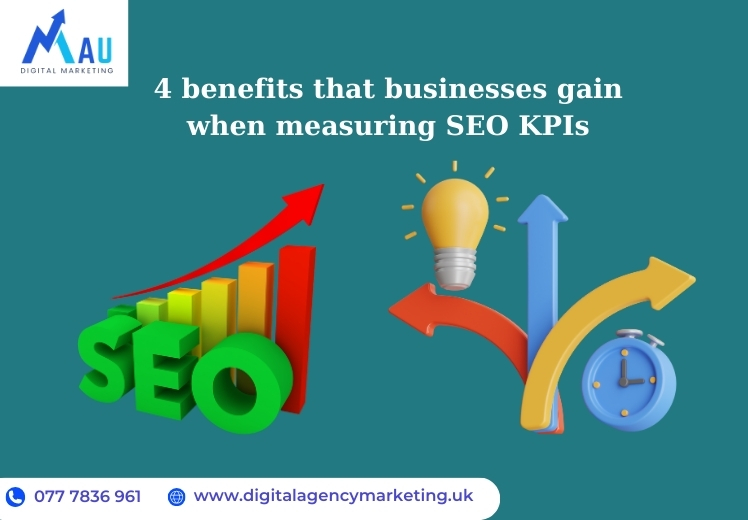Top 10+ SEO KPIs | 6+ Determination Steps, 5 Notes, 4 Benefits You Cannot Skip
Determining the right SEO Key Performance Indicators (KPIs) is crucial for evaluating the effectiveness of your campaign. With dozens of potential metrics to monitor in Google Search, it can be challenging to identify the most important ones for your business. In this article, we'll explore 10 critical SEO KPIs that every organization should be tracking.
| Table of Contents |
10 Critical SEO KPIs to Track
1. Organic Traffic
Organic traffic is a fundamental SEO KPI, representing the amount of unpaid, natural traffic to your website via Google search. Higher organic traffic indicates increased visibility and interest in your online presence, which can drive enhanced brand awareness, conversions, and revenue.
2. Keyword Ranking
Keyword rankings demonstrate which search queries are driving visitors to your site. Closely monitoring your positions in the search engine results pages (SERPs) is essential, as research shows that up to 75% of users click on the top 3 organic listings (excluding ads), with 32% clicking the #1 result.
Tracking keyword rankings allows you to identify high-performing keywords to invest in and underperforming terms to optimize with an optimal Google SEO strategy.
3. Search Visibility
Search visibility directly reflects the success of your SEO efforts and the prominence of your brand. This KPI measures how your website appears for a given keyword relative to your competitors.
For example: If your keyword gets 2,000 searches per month and you get 10% of those clicks to your website, your search visibility is 10%.
Beyond just the top 10 organic listings, today's diverse SERPs also include elements like knowledge panel, local pack or featured snippets.
But the important thing remains the same — the higher your organic visibility, the more potential customers you'll reach.
4. Conversion Rate
Conversion Rate is an SEO KPI that shows how many visitors come to a website and then take a desired action.
For example: A customer visits an article about “Popular nail designs in 2024”. After they read the article, they choose to schedule an appointment or contact and fill in their information. That's a conversion.
These conversions are not only an important SEO KPI for traffic, but they also show the quality of that traffic. Attracting customers to your website is one thing, but convincing them to buy or use a service is the deciding factor.
5. CTR (Click-Through Rate)
CTR or Click-Through Rate is an indicator that shows how many clicks your article website has. If impressions show you how likely your site is to appear in search results. Then CTR shows you how many clicks there are on that search.
But CTR KPI in SEO is very difficult to show you about the effectiveness of the campaign. Because you will not know whether your customers will perform actions such as registering or filling out forms there. Instead, CTR will show you the problems you need to optimize for the website.
For example: An article website has extremely high impressions but low CTR. At that time, you have to ask the question: "Why are the impressions so high but users don't visit?". It could be because the article title is not attractive or the meta description does not attract people to click. From there you can make changes to be more optimal
6. Bounce Rate
Bounce Rate is an index that SEO people pay special attention to. This SEO KPI represents users entering your article page and leaving in a blink of an eye.
This is a KPI indicator for whether your SEO content really attracts readers or not. Or is the content related to the issue the reader is interested in?
The bounce rate of that website is high, which proves that the website does not attract the attention of users. This means that the business loses an opportunity to convert from visitors to potential customers.
7. Time On Site
Time On Site is an SEO KPI indicator that shows that the website's SEO content really attracts readers. It is an index that shows the average time users spend on your website during a session.
We can see that it is beneficial for users to stay on the page longer. The longer a user stays reading an article on a website, the more valuable the content is to the reader. Or the fact that they go from article A to article B, article C on the same website proves their interest in the content that website provides.
8. Links
Links, also known as links, are an extremely important KPI for SEO. There are 3 types of links in SEO: Internal Links, External Links and Social Shares. These 3 types carry a different evaluation index that is equally important for your website.
-
Internal Links: These are links within the same website that link to each other. Effectively measuring and reviewing internal links will strengthen the Page Authority score, or page reputation, for your entire website. It also helps readers easily find related content on the website, increasing their reach as well as reducing the bounce rate.
-
External Links: These are external links pointing to your website and vice versa. Quality External Links index is a measure of the reputation of the entire domain name of the website (Domain Authority). And Google certainly appreciates this criterion to consider whether to put you at the top or not.
Easier to understand, you can imagine that Website A is considered highly reputable by Google, pointing external links to your website. Google also evaluates your website as a reputable website and ranks at the top. But if Website A is rated low, you will also be greatly affected.
-
Social Shares: Helps increase the reach of your content and increase your chances of attracting more External Links. Larger Social Shares increase impressions, which can lead to more external sites linking to your content.
9. Core Web Vital
Core Web Vital is a set of technical SEO KPIs that Google uses to measure user experience. Score is an equally important ranking factor. Therefore, you should always measure this indicator. There are 3 important website metrics to measure:
-
Largest Contentful Paint (LCP): Does the main part of the page load within 2.5 seconds?
-
First Input Delay (FID): Does the page respond to actions? For example, when a user views an article and clicks subscribe, how long does it take for the website to respond? - the ideal time is in 100 milliseconds or less.
-
Cumulative Layout Shift (CLS): Is the page visually stable and free of unexpected movements? It's easier to understand that Google doesn't want its users to accidentally click order or contact while reading content just because the website layout suddenly changed.
10. ROI (Return on Investment)
The ROI index shows the profit you achieve after you invest some money in the campaign. High ROI is shown by the fact that you receive high profits despite low investment costs.
However, ROI KPI in SEO takes a long time, from 5-6 months after running the campaign. Only then can you see whether the SEO campaign is profitable or not.
For example: You are a Nail business owner investing in SEO at a cost of $800 for the total from content to technique. When you have just posted your website to Google for 1-2 weeks, your ROI will always be negative.
However, after 6-7 months, from visits and conversions, you earn $2,000. That means your profit is $200
Then we calculate ROI by [(take profit / initial cost) x 100% ] as [(200$ / 800$) x 100% ]
Your ROI will be: 25% (The more positive the ROI, the more effective the campaign becomes)
6 Steps to Define and Track Powerful SEO KPIs
1. Align SEO Goals & KPIs:
The foundation of successful SEO measurement lies in defining your SEO goals and KPIs based on your business objectives, target audience, and competitive landscape. Ensure your SEO goals adhere to the SMART framework: Specific, Measurable, Achievable, Relevant, and Time-bound.
Your SEO KPIs should serve as the primary indicators measuring your SEO team's effectiveness in achieving your business goals.
For instance, if your company aims to increase organic traffic, key KPIs would include Organic Traffic, Click-Through Rate (CTR), and Bounce Rate.
2. Select Tools that Align with SEO KPIs:
The next step involves choosing SEO tools and platforms that facilitate tracking and reporting of your SEO metrics and KPIs. Here are some popular options that MAU Agency suggests to you to help you track KPIs depending on your goals:
-
Google Analytics: As the most popular web analytics tool, Google Analytics provides detailed information about your website traffic, user behavior, and performance. You can track organic traffic, bounce rate, time spent on site, and more.
-
Google Search Console: Provides valuable information about your site's performance in Google search results. You can track keyword position, click-through rate (CTR), and page load speed.
-
SEMrush: Paid tool offering in-depth keyword research, keyword ranking analysis, and competitor SEO insights.
-
Moz: Paid tool for keyword research, keyword ranking check, and backlink analysis.
-
Ahrefs: Paid tool focus on backlink research, keyword rankings, and competition monitoring.
3. Establish a KPI Tracking System:
Leveraging your chosen tools and platforms, set up a system for tracking SEO KPIs. This includes:
-
Google Analytics: Configure SEO KPI tracking, including tracking conditions, filters, segments, goals, events, and conversions.
-
Google Search Console: Verify domains, set up sitemaps, and monitor performance or potential issues.
-
SEMrush/Ahrefs: Integrate these tools to make informed adjustments to keywords, backlinks, or other areas requiring attention.
4. Monitor SEO KPI Metrics Consistently:
Regularly monitor performance to identify trends and opportunities. Analyze SEO metrics and KPIs at least monthly, ideally aiming for weekly or even daily monitoring based on your goals.
For comprehensive strategy development, compare data across different time periods, channels, devices, locations, and segments.
5. Analyze SEO KPI Data:
Analyzing SEO data grants valuable insights into website performance. Utilize these insights alongside 7 key metrics to measure your SEO success: Traffic, Ranking, Keywords, Content, Links, Technical Factors, and User Behavior..
6. Evaluate SEO Results and KPIs:
The final step involves evaluating the effectiveness of your SEO strategy based on the data analysis. Do your results align with the predefined KPIs established for your SEO goals? If not, identify potential causes.
For instance, a website with high impressions but low CTR may indicate unattractive titles or uncompelling meta descriptions.
5 Essential Considerations for Measuring SEO KPIs
Based on MAU AGENCY's 3 years of SEO experience, here are 5 crucial points businesses should remember when measuring SEO KPIs:
1. Deep Dive into KPIs:
A thorough understanding of SEO KPIs is fundamental for running successful SEO campaigns. This knowledge provides a holistic view of campaign performance, enabling informed strategy adjustments. By mastering SEO KPIs, businesses can:
-
Optimize Budget Allocation: Analyze individual keyword performance and allocate budget strategically towards high-potential keywords.
-
Track Performance with Expertise: Grasping SEO metrics and KPIs unlocks insights into website performance, guiding the development of detailed strategies and decisions.
-
Develop Agile Strategies: Leverage SEO KPI assessments to flexibly adjust and optimize your SEO strategy. This could involve content optimization, keyword shifts, or other tactics to boost overall efficiency and campaign performance.
2. Prioritize Reliable Data Sources:
Creating KPIs from reputable data is an important step in the process of implementing an SEO campaign. Analyzing KPIs from inaccurate metrics will lead to wrong decisions for the entire campaign. Therefore, to ensure accuracy and reliability, we should use data collected from reliable sources such as Google Analytics.
In the process of building SEO KPIs, it is important to clearly identify target keywords, SEO goals, as well as Onpage and Offpage SEO strategies. At the same time, analyzing your own website to identify weaknesses is also an important step. In addition, researching the SEO capabilities of your competitors also helps you better understand the market and your competitors.
3. Categorize specific SEO KPIs
There are two common types of SEO KPIs: Agency-Focused KPIs and Business-Focused KPIs.
Agency-Focused KPIs were designed to assist businesses and SEO professionals in crafting effective strategies to optimize the SEO process. This complex process requires significant time and consideration of various factors, necessitating focused and meticulous monitoring.
Business-Focused KPIs were developed to generate reports for clients or management. These KPIs require clear definitions, easy comprehension, and a scientific approach to build trust and facilitate clear communication of strategic content.
4. Patience is required in the process of measuring SEO KPIs
Measuring KPIs in SEO requires patience. Typically, the results of SEO campaigns do not appear immediately and can take from 6 months to a year to materialize the result.
Additionally, search engine algorithms often change, and this can affect your SEO performance. Therefore, patience is required to adjust and optimize your strategy according to these changes.
5. Choose a Partner with a Reputable SEO Provider
To ensure campaign quality and effectiveness, choose a reputable company with a team of experienced SEO specialists. This team should possess a deep understanding of diverse SEO techniques and operate with professionalism and dedication.
More Resource: Overall SEO service
4 Benefits that businesses gain when always measuring SEO KPIs
1. Uncover Website Performance Insights:
Tracking SEO KPIs provides a comprehensive overview of your website's search engine performance. This data serves as a dynamic SEO dashboard, illuminating areas of strength and opportunities for improvement. By analyzing these insights, you gain a granular understanding of your website's search engine visibility and can make data-driven decisions to optimize your strategy.
2. Identify and Address Issues Before They Escalate
SEO KPIs function as early warning signals, allowing you to identify potential issues before they significantly impact your website's performance. This agility empowers you to address problems promptly, preventing them from snowballing into larger concerns. It's akin to detecting a small crack in a foundation before it develops into a major structural issue.
3. Focus on What Moves the Needle:
Understanding which areas of your SEO strategy are underperforming allows for data-driven optimization. This empowers you to prioritize efforts effectively, maximizing results without unnecessary workload. Instead of relying on guesswork to identify areas for improvement, SEO KPIs provide clear insights into specific issues that require attention.
4. Regularly Monitoring Your Website's Health:
Regularly monitoring your website's SEO performance is akin to conducting a proactive SEO health check. Just like scheduling regular physical checkups, this practice ensures the websites' SEO KPIs remains optimized, maintains search engine visibility, and continues to attract a steady stream of organic traffic. Websites with strong SEO health tend to rank higher in search results pages (SERPs), leading to increased organic traffic acquisition.
--------------------
DIGITAL AGENCY MARKETING UK
Add: 133 Creek Road, London SE8 3BU
Tel: 077 7836 9618
Email: admin@digitalmarketingagency.uk
Website: https://digitalagencymarketing.uk/
Tin tức khác
10 Comprehensive Steps to Craft an SEO Strategy and Dominate the Market in 6 Months
Pricing 10+ Type of SEO Cost That Business Owners Should Pay Attention
Can Business Owners Become SEO Experts?
Top 10 SEO Mistakes Business Owners Need to Avoid
11+ Steps to Create a 6-Month Overall SEO Plan for New Businesses

